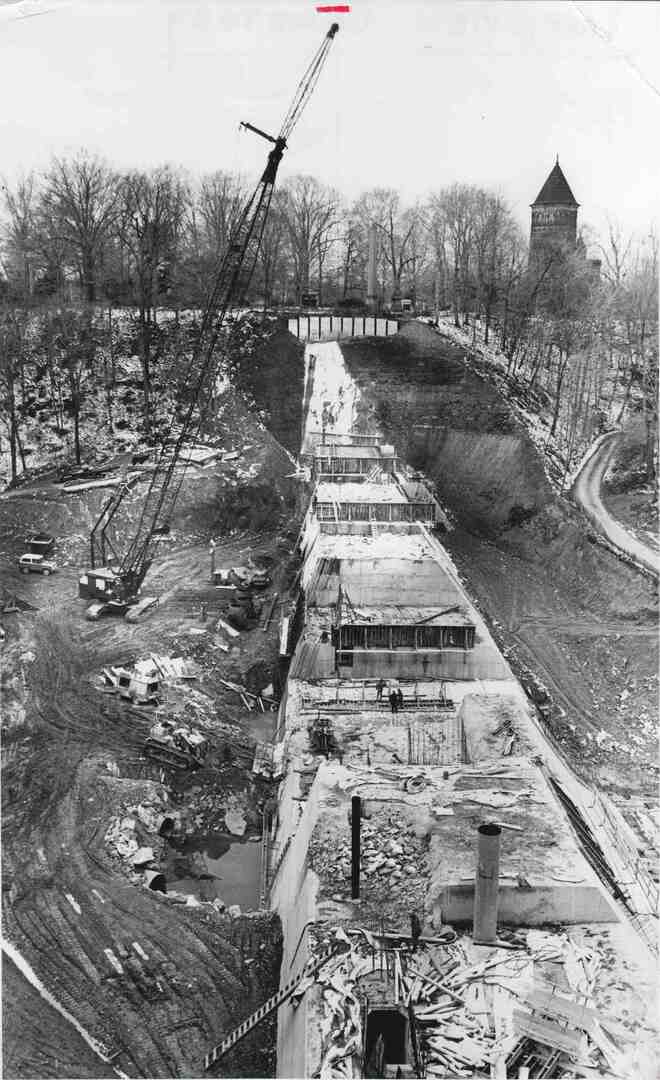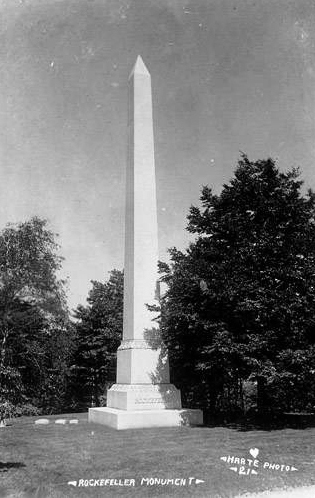
One afternoon in the summer of 1869 Liberty Holden was riding down Euclid Avenue when he noticed a beautiful forested green space with rolling hills. Holden suggested the spot to the Lake View Cemetery Association as the perfect place for the cemetery they were planning. The Association bought the 211-acre spot and transformed it into the first rural cemetery in Cleveland.
The rural cemetery (or garden cemetery) movement in the United States began on the East Coast during the early nineteenth century. Mount Auburn Cemetery in Cambridge, Massachusetts (established in 1831), Laurel Hill Cemetery in Philadelphia, Pennsylvania (1836), and Green-Wood Cemetery in Brooklyn, New York (1838) are considered the nation’s first three rural cemeteries, and they laid the pattern that many other American cities would follow in establishing their own rural cemeteries.
Before the rural cemetery movement, most urban burial places were located in churchyards. The move from burial places in the city to a rural setting happened for a multitude of reasons. The first reason was many burial grounds in the city occupied prime locations eyed for commercial development. The second issue that led to the foundation of rural cemeteries was that the capacities of these burial grounds were reaching their limits. Yellow fever in New York led to high mortality rates. Mass graves, bodies being kept in church cellars, and the generally poor condition brought up concerns about respect for the dead. The condition of the burial grounds was also threatening to compromise public health. In particular the gas fumes from dead bodies were noxious. The final reason for the establishment of rural cemeteries was a change in view of nature. Nature came to be seen as beneficial for human health. Those who planned the first rural cemeteries responded by taking the natural landscape into consideration in their designs.
The rural cemetery movement was also called the garden cemetery movement because rural cemeteries, with their emphasis on cultivated nature, doubled as parklands. Rural cemetery planners drew inspiration from English gardens. Mount Auburn was the brainchild of Dr. Jacob Bigelow, a medical doctor and botanist. With the support of the Massachusetts Horticultural Society, the cemetery included a botanical garden. The cemetery, along with providing a place for burials, was a green space for the city of Boston and a popular destination for locals and tourists alike. Rules were implemented and updated in order to manage the number of visitors in respect of those buried and their families. The rural cemetery movement therefore helped with the creation of separate city parks.
Lake View Cemetery mirrored these predecessors in its creation. Jeptha H. Wade, Joseph Perkins, and Henry Bolton Payne were the first group to discuss the creation of a rural cemetery in Cleveland. Through their efforts, the Lake View Cemetery Association was organized on July 28, 1869. The Association looked for picturesque locations for the cemetery and acquired 211 acres (now 285 acres) east of Cleveland between Euclid Avenue and Mayfield Road. The Association brought in Adolph Strauch, a well-known gardener, landscaper, and the superintendent of Spring Grove Cemetery in Cincinnati. Spring Grove was another well-known early rural cemetery designed by John Notman, who had previously designed Philadelphia’s Laurel Hill Cemetery. Lake View had hills and valleys with peaks high enough to look out over Lake Erie and still see the city. Parts of the land were densely forested. A few streams were located on the property that were planned for use in creating manmade lakes. Strauch laid out the walking paths and the lot boundaries before filling in where the trees and plants should be placed. His method involved accentuating the natural features of the landscape.
Not only did Lake View mirror Mount Auburn, Laurel Hill, and Green-Wood in its conception but also in its later regulation of visitors. These regulations reflected one of the intended aspirations for rural cemeteries besides merely housing the dead. The cemetery served as a place of moral education as well as a beautiful landscape with grand monuments, including memorials to President James A. Garfield, John D. Rockefeller, and Jeptha Wade. If the solemnity of its statuary failed to inspire, cemetery rules instructed visitors on how to act while on the grounds and guide toward solemn remembrance. An 1882 column titled “Lake View Cemetery: Not a Picnic Resort” brought complaints made by lot owners and family of the buried to the public's attention. Its author described the fanfare associated with visiting President Garfield’s memorial but emphasized the issue of strangers setting up picnics on grave monuments and the crowds trampling the grounds. There was a call for regulation on Sundays that led to implementation of ticketing for admittance to follow the same action taken at Green-Wood and Spring Grove cemeteries.
Once among the only substantial cultivated green spaces in reach of Clevelanders, Lake View Cemetery became less novel by the turn of the twentieth century, when newly opened city parks began to lure recreation-seekers away. Nevertheless, Lake View continued to attract visitors with its variety of plants, trees, and flowers. In the 1940s Dr. William Weir cultivated more than 170 varieties of daffodils and donated a large collection of bulbs to Lake View. The bulbs were planted in a three-acre portion of the cemetery with more being added each year. With more than one hundred thousand bulbs, Daffodil Hill has become a perennial attraction enticing visitors back to Lake View Cemetery yearly to see them in bloom.
Audio
Images








